The Multifaceted Tarik Skubal
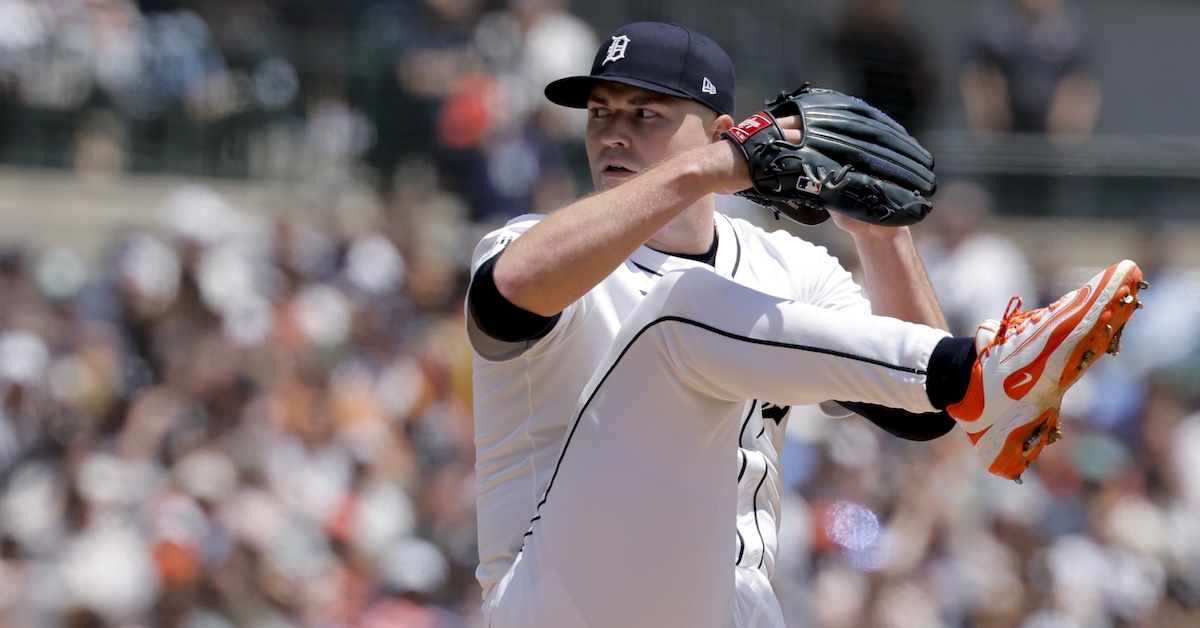
In 2024, Tarik Skubal won the American League Cy Young. It was unanimous, and deservedly so. However many superlatives you can think of for his production, he probably deserved them. He shouldered a heavy workload, combined devastating movement and velocity with great command, and led the Tigers to the playoffs in the bargain. It’s the kind of year that stands as the best season of many players’ careers.
That might sound like I’m calling Skubal a one hit wonder, but I’m absolutely not. We projected him to be the best pitcher in baseball before the season started. We also projected him to strike out fewer batters, walk more, allow more home runs, and post a higher ERA and FIP than he did in 2024. You can be great and still worse than Skubal was in 2024. In fact, almost all great pitchers are worse than he was last year. It’s hard to be that good!
You’ll note that I didn’t say it’s impossible to be that good. That’s because, uh, have you seen Tarik Skubal pitch this year? His statistics sound almost made up. He’s the class of baseball, very clearly the best pitcher in the game this year. Of course, if you’ve kept up with our leaderboards and watched highlights, I’m not telling you anything new. But on the occasion of the best game of Skubal’s career, I thought it would be fun to dig into his marvelous season and just admire it for a bit. Tarik Skubal is everything, everywhere, all at once. His 2025 is the best in every way it’s possible to be the best. We don’t always have to wonder whether something is sustainable. Sometimes we can just appreciate it.
The greatest thing about Skubal’s 2025, at least in my opinion? His single-minded pursuit of efficiency. For guys like Skubal, the worst result of a pitch is usually a ball. When hitters chase, he’s obviously doing well. When he throws a pitch in the strike zone, he’s comically dominant. Hitters are coming up empty very frequently when they swing at pitches in the zone, and even when they make contact, that’s not the end of the world for Skubal. Most of that contact is foul, and extra bases aren’t particularly devastating for him because he allows so few baserunners. But a ball doesn’t give him a chance for any of the good outcomes. It just increases his pitch count, with a chance of also walking the runner and juicing the bases. That creates the possibility for cascading failure – runners on base make pitches in the strike zone more dangerous, but pitches outside the strike zone might put even more runners on base, and so on.
Not everyone could get away with this, of course. Throw a middling sinker like Skubal throws his top-shelf offering and it would get tattooed. But when you have his heavy-duty fastball and nasty secondaries, attacking the zone is strictly good. You can see it in Skubal’s past results, in fact. From 2020 through 2022, around 35% of the pitches he threw resulted in called balls. There’s nothing particularly wrong with that – that’s basically league average – but Tarik Skubal and league average don’t belong in the same sentence. That’s how he posted an ERA in the mid-4.00s in those years despite the eye-watering stuff that you now associate with him.
In 2023, Skubal started to bear down. He threw in the zone more frequently. When he danced off the plate, he did so in situations where hitters were more likely to swing, and also got them to swing more frequently by sharpening the break on his pitches and locating them better. His rate of balls fell to 30.6% as he broke out over 15 scintillating starts in an injury-shortened season. He held that rate last year, throwing 30.7% balls en route to his Cy Young win.
That’s a dominant mark. It was the third-lowest rate of balls (or third-highest rate of “strikes,” including balls in play, if you’d prefer) among starters. Only Bryan Woo and Spencer Schwellenbach, noted paragons of command, did better. If you’re looking for a little historical context, my personal list of the best starters of the pitch tracking era starts with Max Scherzer, Justin Verlander, Clayton Kershaw, Chris Sale, and Jacob deGrom. Each of them has a career called ball rate between 32.4% and 34%. At their very best, they each produced seasons like Skubal’s 2024, in the low 30s or extreme upper 20s, yet another reason that it felt like a career year.
Okay, now let me tell you about 2025. You thought 30% was nice? How about 28.7%, Skubal’s league-leading mark this year? He’s pouring in strikes at a rate that says “here, hit this” like he knows they won’t. And, well, he knows they won’t! Let’s imagine the worst case for a pitcher: They throw their fastball over the heart of the plate, and the batter swings at it. It’s the most hittable pitch in baseball thrown to the most hittable location in baseball. This is where hitters make their paychecks.
Hitters don’t miss those pitches very often. Their whiff rate – swings that either miss or produce a foul tip – is only 13.5%. In other words, they put the ball in play a ton, and do a ton of damage when they do. That’s against mortals, though. Here are the pitchers who beat batters most frequently with those middle-middle fastballs:
| Pitcher | Whiff% |
|---|---|
| Joe Ryan | 25.4% |
| Jacob deGrom | 25.0% |
| Hunter Brown | 23.1% |
| Paul Skenes | 22.2% |
| Shota Imanaga | 21.8% |
| Nick Pivetta | 21.4% |
| Hunter Greene | 21.1% |
| Tarik Skubal | 21.0% |
| Gavin Williams | 20.3% |
| Will Warren | 19.8% |
That’s a bunch of the best pitchers in baseball, most of whom throw only four-seamers. Meanwhile, Skubal is on there even though roughly half of his fastballs are sinkers. That’s part of his magic: He can bombard the zone because he’s hard to handle even when he engages with hitters on their turf. Some of the guys on there have the best fastballs in baseball. Skubal belongs in that group.
As Thomas Harrington pointed out, Skubal’s four-seamer has gotten better this year. He’s throwing harder and inducing more vertical break, which has driven him to the best whiff rate in the majors on that pitch. When he locates it at the top of the zone, there’s nothing opposing hitters can do. And, well:
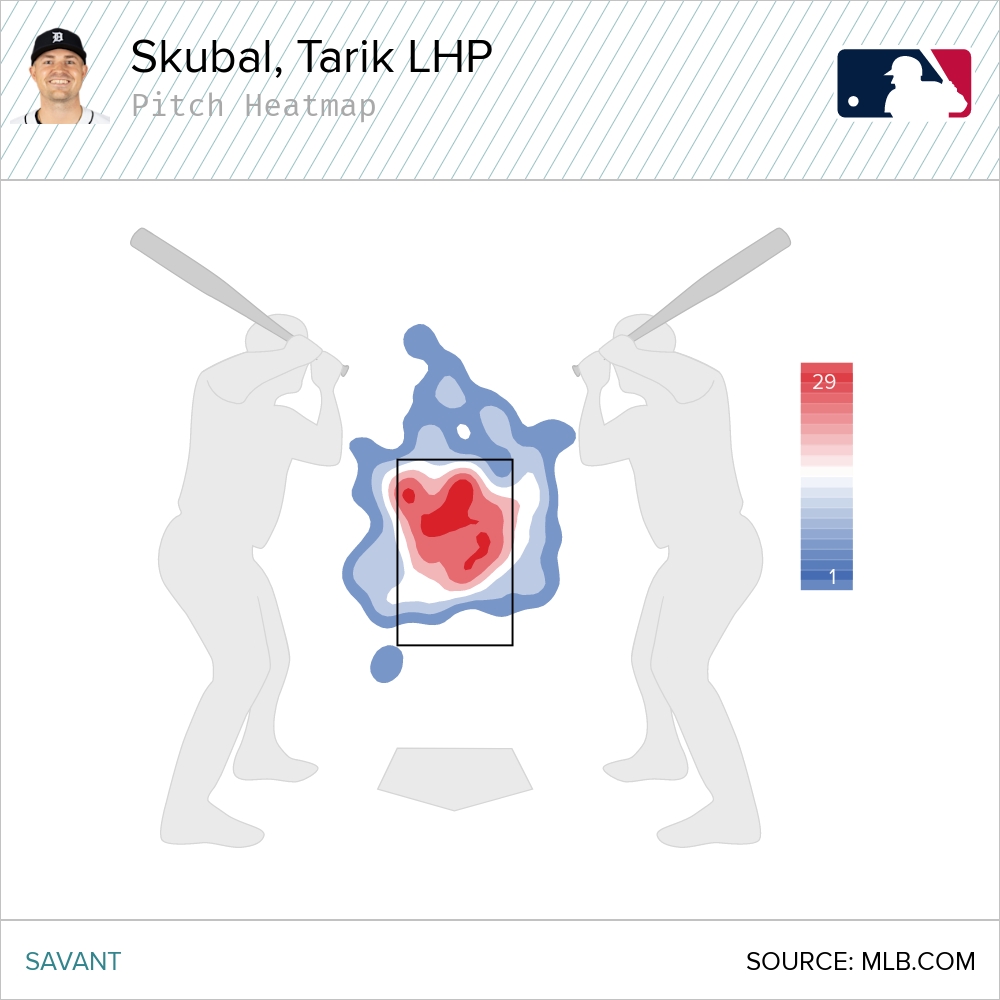
That’s pretty much perfect for someone like Skubal. He aims for the top of the zone, and if he misses, he misses over the plate. Unless he’s looking for weak contact, of course. In that case, he just dials up his sinker, a 98 mph missile that jams righties inside and almost never misses the zone; it has a preposterous 67% zone rate. Seriously, this chart is video game stuff:
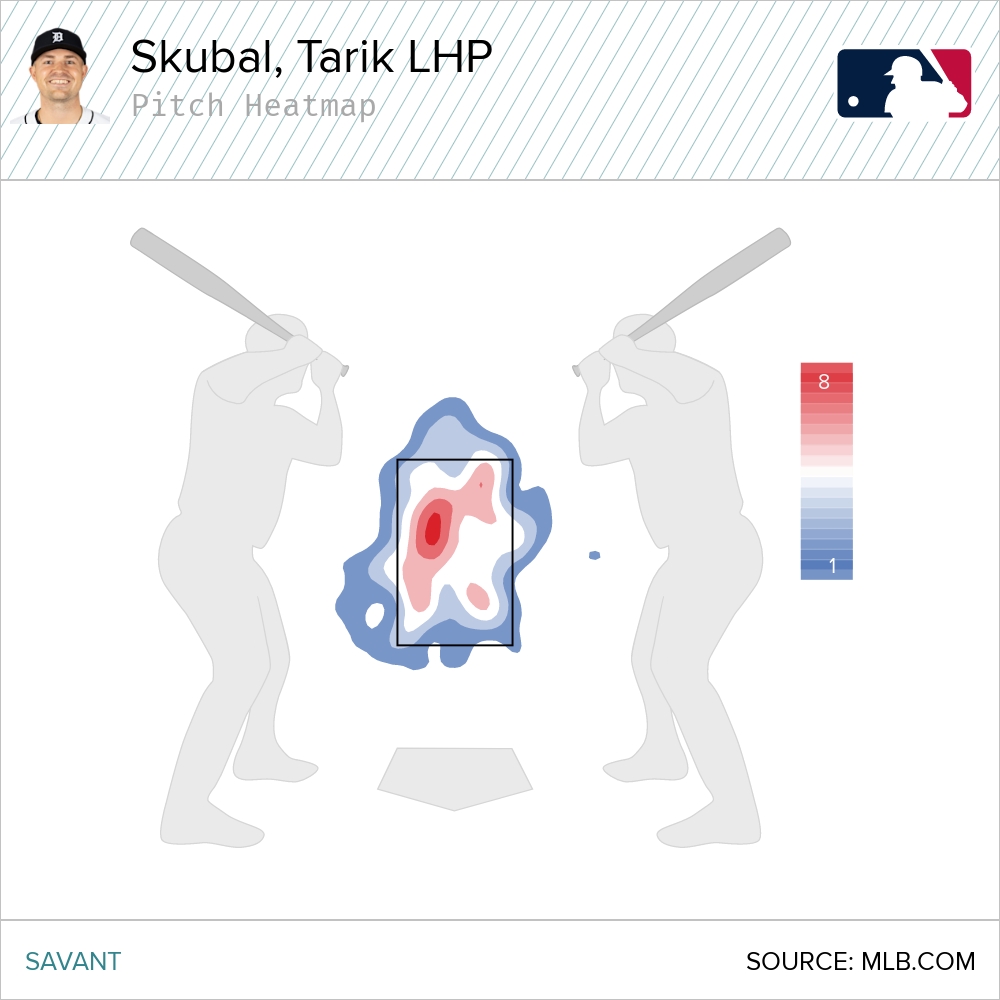
You might think I’ve captured Skubal with this article so far. He throws fewer balls than anyone else in baseball, and he can do that because he has two explosive fastballs that he throws in the zone with inhumanly accurate placement. But while those two things are true, they leave something out. They leave out half of his pitches, in fact: Taken together, Skubal throws his two fastballs a mere 53% of the time.
Skubal’s most used pitch this year isn’t either of those, it’s his Bugs Bunny changeup. That descriptor is usually saved for curveballs, but if Bugs threw a changeup, it would look like Skubal’s. It travels 53 feet looking like a 90 mph fastball, but then it falls into a tiny, localized black hole. Where’d it go? Sal Frelick certainly couldn’t tell you:
That’s a ridiculous pitch. It’s 90 mph with an optical illusion strapped on. The speed and shape are a computer program’s dream. Our two pitch-level models don’t agree on changeups all that often, because there are a lot of ways to throw a good changeup, and just as many ways to throw a bad one. But both models agree: Skubal’s is the class of the major leagues. It gets on hitters instantly and falls 17 inches more than his fastball, even though his delivery makes it look exactly like a fastball.
The superlatives are endless. Hitters swing and miss on 29.7% of the changeups he throws. Not 29.7% of the ones they swing at – 29.7% overall, counting everything. They come up empty on exactly half of their swings. His 94 swinging strikes on changeups are the most in baseball by a lot – he’s 17 ahead of Cristopher Sánchez in second place. In the situation where he uses it most – two strikes to righties – he’s lethal. He’s ended at-bats on that pitch a full third of the time he throws it, the best mark in baseball, and it’s not particularly close.
Armed with that unhittable weapon, he attacks the strike zone quite a bit. He also wields it like a surgeon with a scalpel. Here’s where he throws it early in the count:
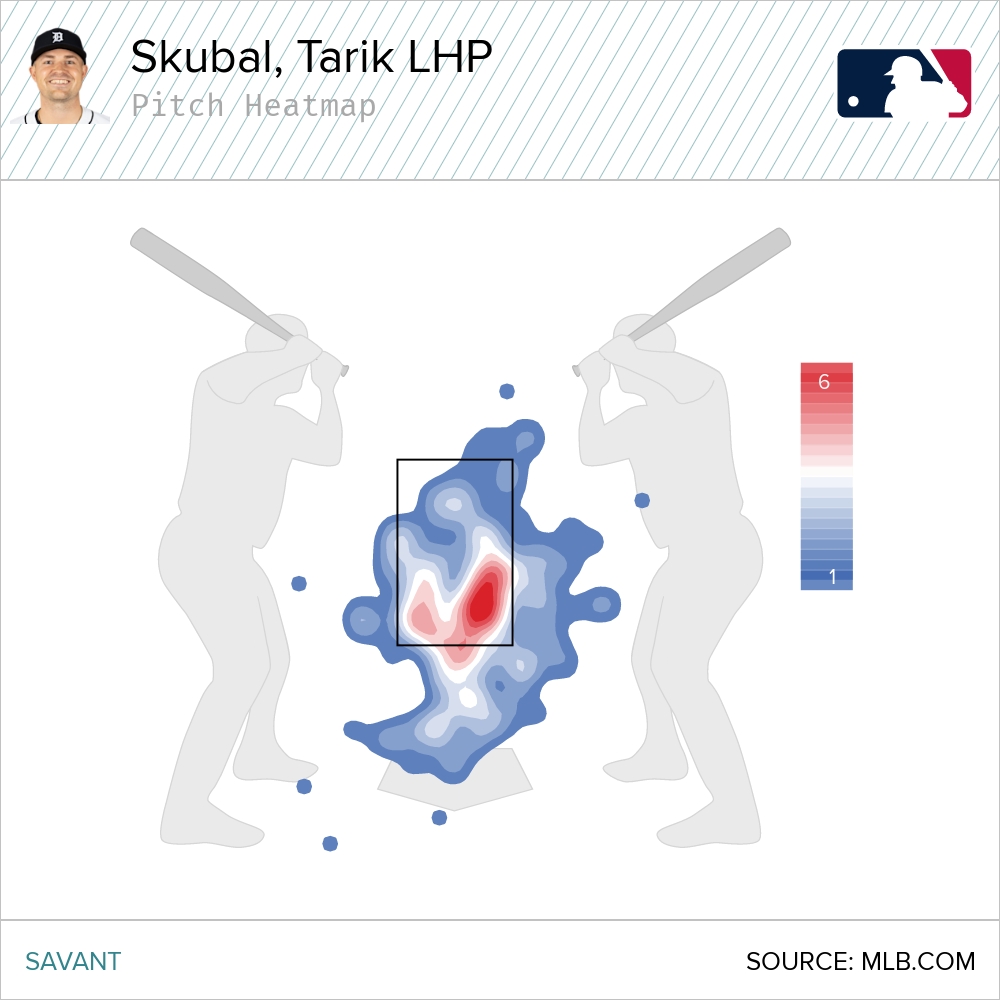
Low and away from righties, but definitely in the zone. You couldn’t do much better if you were playing a video game. With two strikes, he ventures off the plate just enough to entice bad swings:
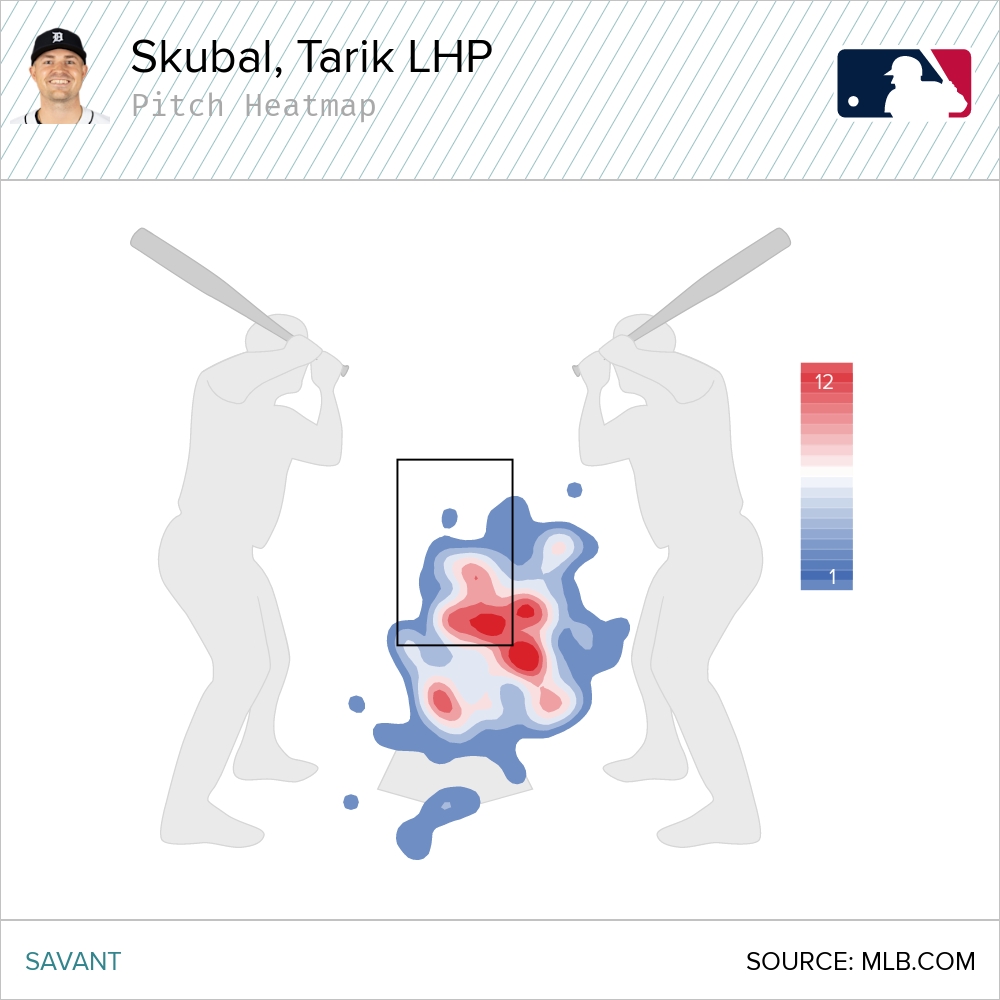
Our pitch modeling metrics separate stuff and location. When I told you that they considered Skubal’s changeup the class of the major leagues, I was talking about the stuff grade. Ignoring location, not considering anything about that particular pitcher’s command, it’s the best changeup in baseball. But he’s also one of the best pitchers in baseball when it comes to changeup command. He’s in the top seven per PitchingBot, and the top three per Stuff+. Put it all together, and this pitch is straight up ludicrous.
I haven’t even gotten into his slider, a plus pitch of its own that he breaks out to attack lefties. At 90 mph, it’s sharp and fast, with enough wiggle to make hitters look silly. But I’ll stop there. That’s because if I didn’t stop myself somewhere, I could write about Skubal for days. When it comes to attacking with his fastball, he’s probably the best in the game. He also has the best changeup in the game, or maybe even the best secondary pitch in the game, period. It all works so well, and he knows it all works so well, that he’s using those skills to pour in pitches, letting him work deeper into games.
On Sunday, that all came to a head. Skubal struck out 13 in a dominant shutout of the Guardians, allowing only two hits and no walks. Oh, and he did it on 94 pitches, an unbelievably efficient outing. His 13 strikeouts in a Maddux – a complete game with fewer than 100 pitches – is a new all-time record, surpassing a decorated trio headlined by Sandy Koufax. He did it the way he’s pitched all season, just a shade better: overwhelming, untouchable, filling the zone with impending doom.
Is this just who Tarik Skubal is now? I don’t think so. No one’s quite this good for all that long. But who cares? That hasn’t happened yet. Right now, Tarik Skubal is pitching out of his mind. He’s pitching as well as I’ve seen anyone pitch – not necessarily better than peak Pedro or deGrom, but certainly on their level. The next big question is how long he can keep it up – because right now, he’s doing it as well as it can be done.
Ben is a writer at FanGraphs. He can be found on Bluesky @benclemens.

Skubal 4 seamer average velocity
2022: 94.1
2023: 95.8
2024: 96.9
2025: 97.7
Skubal walk rate
2022: 6.7%
2023: 4.5%
2024: 4.6%
2025: 2.7%
Everybody should simply do this imo
“It’s like saying to Pavarotti teach me to sing like you”!